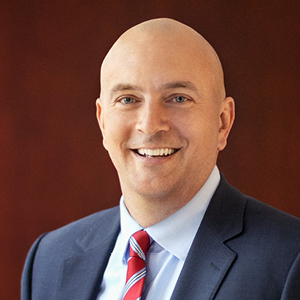In December 2019, Congress passed and President Trump signed into law the SECURE Act, which is one of the most significant pieces of retirement legislation in years. There are several facets to the law, but I will focus on three parts that are most significant to individual retirees or those close to retirement.
Changes to Required Minimum Distributions
The first is the change to the Required Minimum Distribution (RMD). The RMD is the amount the federal government requires you to take out of your traditional IRA or a qualified plan so it can start taxing those funds. The amount is based on your account balance as of year-end and your age/life expectancy. Previously, those distributions started the year you reached age 70 1/2. Individuals who turned age 70 1/2 after December 31, 2019 will not have to start taking distributions until the year they turn 72. Individuals age 70 1/2 prior to December 31, 2019 are required to continue taking RMDs.
Inheriting IRAs and Other Qualified Plans
Second, the options for non-spouse beneficiaries of traditional IRAs and qualified plans have been significantly changed and will likely impact plans to distribute money to heirs. For deaths occurring after December 31, 2019, non-spouse beneficiaries, such as children, will have to withdraw all the funds from the traditional IRA or qualified plan within 10 years. Those withdrawals are taxable as ordinary income. If there are significant assets in those accounts, your non-spouse beneficiaries will likely be looking at higher marginal tax rates over the next 10 years because of the required withdrawals.
Previously, a non-spouse beneficiary would have the option upon inheriting an IRA or other qualified plan of taking distributions based on his or her life expectancy. For example, an individual who inherited an IRA in his or her 40s could withdraw a relatively small amount out of their inherited funds given a long-life expectancy and maintain the account for decades, all the while taking advantage of compounding earnings in a tax qualified status.
Often, an IRA or other qualified plan could be passed to a third generation, such as grandchildren, and allow them to take advantage of tax qualified growth. In the financial community, this was often known as the “Stretch IRA,” which allowed customers to pass on their wealth in a tax advantaged format to multiple generations after their passing. With this option no longer available, those with significant IRA and qualified plan assets should consult their financial advisor to discuss options for most efficient ways to distribute those assets to their heirs.
Qualifications to Contribute
Finally, the SECURE Act allows anyone to contribute to a traditional IRA regardless of age, assuming you have earned income. With more and more Americans working into their 70s, this gives them a chance to continue to contribute to their eventual retirement. The changes do not apply to contributions for tax year 2019.
If you would like to discuss the SECURE Act and how it might impact your retirement, please feel free to contact our BTC Financial Services team. We are happy to set up a convenient appointment.
Jason Egge is a registered representative with Securities America, Inc. Securities offered through Securities America, Inc., member FINRA/SIPC. Advisory services offered through Securities America Advisors, Inc. Bankers Trust, BTC Financial Services, a division of Bankers Trust, and Securities America are separate companies. Securities America and its representatives do not provide tax advice; it is important to coordinate with your tax advisor regarding your specific situation.
Not FDIC Insured. No Bank Guarantees. May Lose Value. Not a Deposit. Not Insured by Any Government Agency.








 Equal Housing Lender. SBA Preferred Lender. NMLS #440379
Equal Housing Lender. SBA Preferred Lender. NMLS #440379